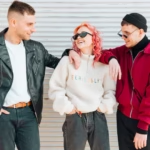1. Website
It needs to be clean and professional. By and large, keep the background grey or white. (black is usually too heavy)
Show that you care about your presentation and honor your work. If you don’t take yourself seriously enough to make a decent website, no one else will.
Make your site easy to use by keeping the design clean, clear and easy for the visitor to move from one work to the next.
Not every website style is right for you. If your work has a lot of accompanying text, or it’s sculptural/installation based; separate pages will help you showcase each project in the depth that it needs. BUT, if your work is illustration/painting and doesn’t have a lot of text, consider having all the images on one page so you can flip from one to the other, this will make it easy for the visitors to look at your work without a lot of unnecessary page clicking.
Organize your work, don’t let things get lost. You have to find a system that works best for you. Sometimes it’s by date or maybe it’s by material or theme. Keep your most important work first. Some people will not go far into your site, before making a decision about you.
Artist statements are important. Consider this: through some written text about your work, you are welcoming in your site visitor with open arms. Without it, you can come off conceded or “above explanation” which makes people feel stupid if they don’t understand what your work is about. Your artist statement can be short, and sweet. It should be welcoming and honest if all else.
2. Social Media – Instagram
People like us, get to see what you are currently working on. All the things that haven’t been added to your website. We also get to get a sense of who you are.
You get to engage with your community. Instagram has the best platform for visual artists. So if you’re one of those, you should have an active professional account. It’s as important as going to gallery openings use to be. why? read on…
Sites like ours scout for talent there as well as galleries.We find a large number of our artists through Instagram. I have bought and sold work through people I found/ found me on the site. I have built relationships with galleries and curators through the platform as well as great friendships with other artists. It’s really not something you should over look.
It is free promotion for yourself, use it or lose out. Every day people buy and commission work that they see through Instagram EVERYDAY. I know many artists who make the majority of their earnings through people finding their work on Instagram. It’s arguably the most powerful tool for contemporary artists.
2.5. Instagram Professionally
It’s not enough to just have one and post willy nilly. To be truly successful on this platform and reap the most potential you’ll need to take it seriously. Here are some tips for keeping a professional artist instagram:
Post regularly but not so much so that your feed is full of boring things.
LIGHTEN YOUR PICTURES. A dark picture of your work is the WORST. So is an over edited one.
Be honest, Be yourself. an occasional non-art picture is fine, but if you focus your feed you’ll attract more people which means a bigger community and more opportunities for people to care about what you make and purchase it. Look at your feed like a gallery show/ studio visit. Show some of your process and some of your finished work. As a curator, I like to see a finished piece in the top 12 or so pictures. If I can’t easy find out what you do, I won’t follow you and I won’t feature you.
Don’t flood the feed. A rule of thumb is: don’t post more than two pictures a day and don’t post back to back. I have stopped following people who were doing interesting work because they kept flooding my feed, including other art magazines and blogs. (probably the worst offenders of the rule)









